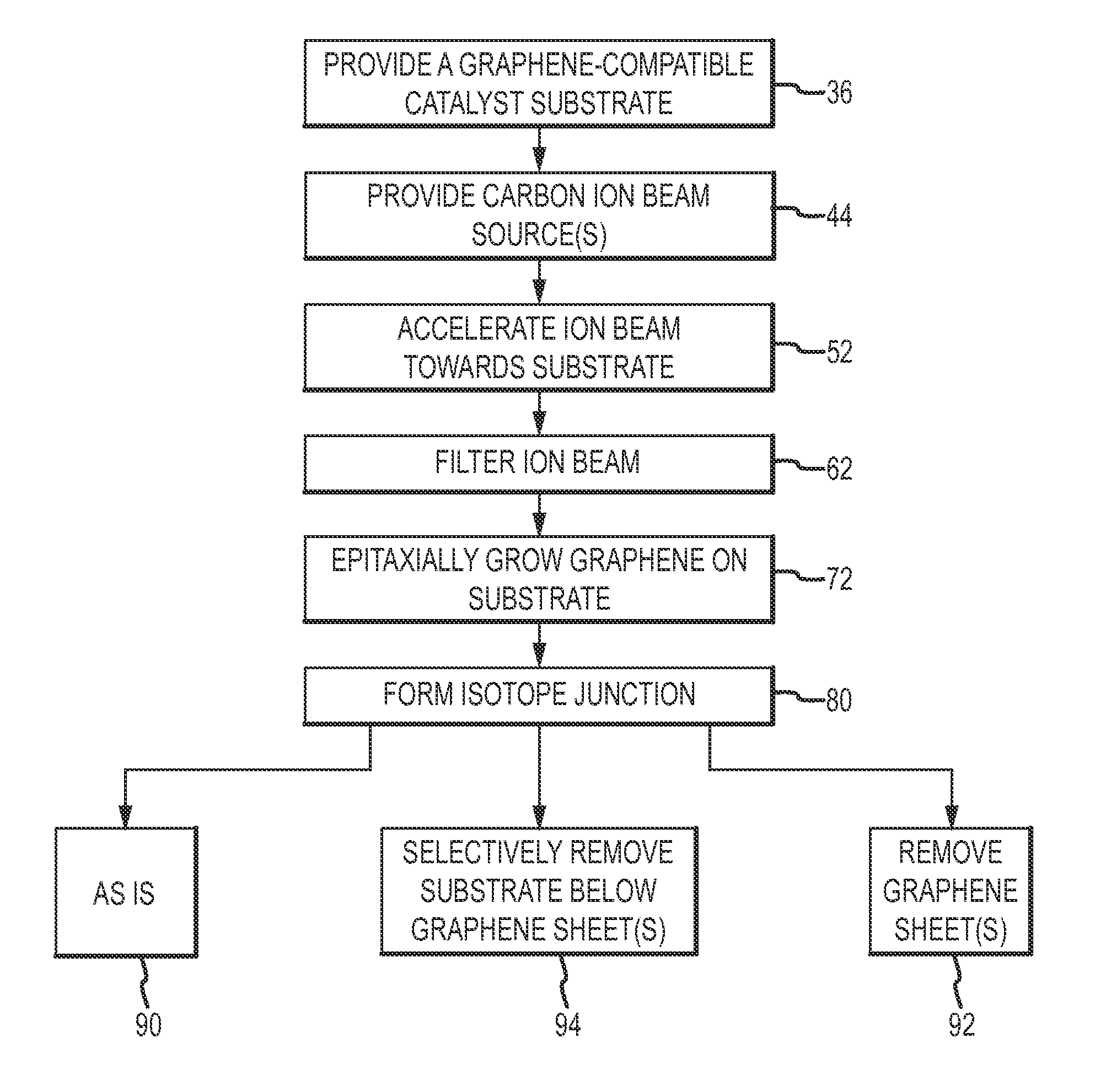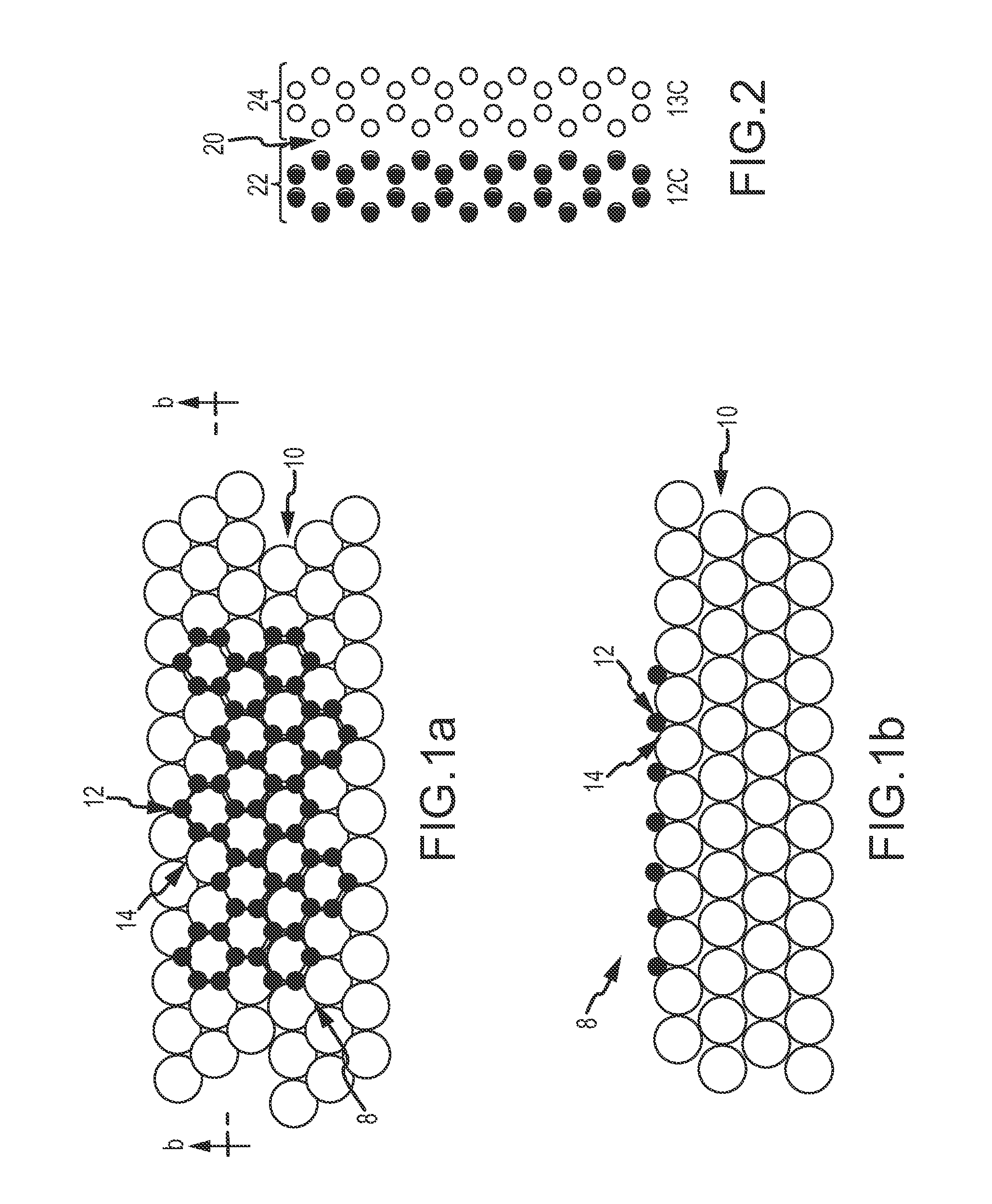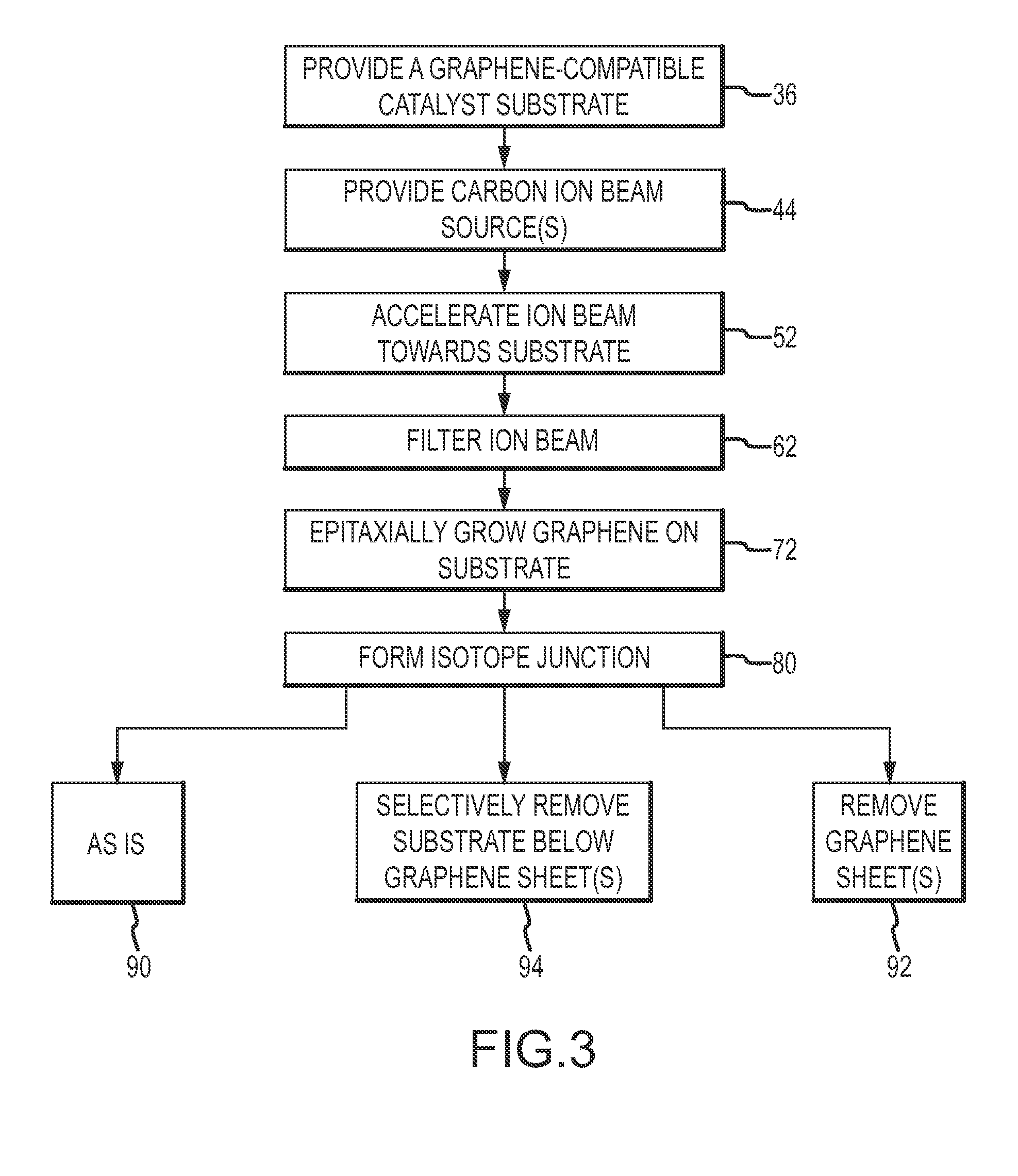Carbon ion beam growth of isotopically-enriched graphene and isotope-junctions
a technology of isotope-junctions and carbon ion beams, which is applied in the direction of crystal growth process, polycrystalline material growth, separation process, etc., can solve the problems of too early to say whether graphene could end up being useful, and prove too difficult to pull off in a cost-effective way
- Summary
- Abstract
- Description
- Claims
- Application Information
AI Technical Summary
Benefits of technology
Problems solved by technology
Method used
Image
Examples
Embodiment Construction
[0029]As shown in FIGS. 1a and 1b, epitaxy may be used to create a single or few sheets of graphene 8. A substrate 10 is provided that includes a single crystal region on the surface of the substrate. This region has a honeycomb, hexagonal crystal lattice substantially lattice-matched to graphene. Typical substrates include Silicon-Carbide (SiC) and elements from the periodic table including iron to copper, ruthenium to rhodium and rhenium to iridium and mixtures thereof and various multi element structures such as Al2O3 and alloys of the above to approximate the symmetry and lattice constants of graphene. Carbon atoms 12 from a carbon precursor (e.g. a solid target, gas or liquid) are deposited at the vertices of three adjacent atoms 14 in the substrate. The distance between these vertices is approximately the lattice constant of graphene. The planar sheet of sp2-bonded carbon atoms 14 that are densely packed in a honeycomb, hexagonal crystal lattice define graphene 8.
[0030]For man...
PUM
| Property | Measurement | Unit |
|---|---|---|
| crystal lattice | aaaaa | aaaaa |
| electric field | aaaaa | aaaaa |
| charge-to-mass ratio | aaaaa | aaaaa |
Abstract
Description
Claims
Application Information
 Login to View More
Login to View More - R&D
- Intellectual Property
- Life Sciences
- Materials
- Tech Scout
- Unparalleled Data Quality
- Higher Quality Content
- 60% Fewer Hallucinations
Browse by: Latest US Patents, China's latest patents, Technical Efficacy Thesaurus, Application Domain, Technology Topic, Popular Technical Reports.
© 2025 PatSnap. All rights reserved.Legal|Privacy policy|Modern Slavery Act Transparency Statement|Sitemap|About US| Contact US: help@patsnap.com



